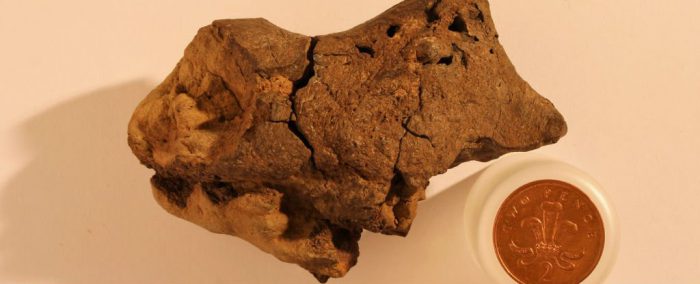Dinosaurs were big and powerful. Some were absolutely massive. Many were some of the most ferocious and deadly creatures ever to walk the Earth. But there's one thing we don't normally call dinosaurs.
Intelligent.
Though studies have suggested a few Cretaceous (later era) dinosaurs, such as Velociraptor, may have been quite smart, generally dinosaurs have been considered to be fairly dimwitted creatures. But now a brand new and remarkable fossil is starting to challenge this. For the first time ever, we have actual fossilized dinosaur brain tissue. And the initial analysis of it is proving to be fascinating.
Guesswork
A model of an Iguanodon head. (Getty Embed)
Paleontologists almost never find a complete fossil of any extinct creature. In fact, some dinosaur species have only a single, very incomplete fossil in existence for these scientists to work from. So these researchers have always needed to compare similar modern animal life to fill in gaps about what they knew about dinosaurs. This includes everything from the dinosaur's likely behaviour and diet to how their anatomy probably worked. It's a pretty solid way of understanding what real living dinosaurs were like. But in the end, they're still only guesses.
A dinosaur brain requires a lot of this kind of guesswork. Why? For starters, brains are tissue, not bone. So they decay quickly and don't fossilize well. (This dinosaur brain was only preserved because the animal died and was immediately submerged in acidic swampy water—it mineralized the tissue, allowing it to fossilize.) So in the past, scientists looked at the space inside the skull—the brain cavity—and used that to estimate the size and shape of the brain. Seems like a good plan. After all, it's not as though the brain could've ever been bigger than the available space inside the skull, right?
Explaining the membrane
True. Except for one wrinkle (and here's where our Iguanodon brain fossil gets really interesting). Since dinosaurs were reptiles, scientists usually used modern reptiles as a comparison. Such as the crocodile. The crocodile has a thick protective layer called a membrane that surrounds its brain. It is so thick, that the brain tissue inside is pretty small. And that crocodile? It may be fierce and deadly, but it's not terribly smart.
But this dinosaur brain fossil shows a very thin membrane. This is more like what you find around the brains of birds. And birds? Well, they can be quite intelligent. In other words, while the Iguanodon's brain cavity (or "room") remains the same, the fossil shows that there was more brain tissue in it. More brain tissue = more thinking!
So sorry for calling you dumb, Iguanodon. Humanity owes you an apology.
(See an animation of the fossilized brain tissue here!)
 The Iguanodon brain fossil, shown next to a British two pence coin for size comparison. (Jamie Hiscocks/University of Cambridge)
The Iguanodon brain fossil, shown next to a British two pence coin for size comparison. (Jamie Hiscocks/University of Cambridge)










That’s so neat!
i find it kind of gross…….i mean, were looking at a BRAIN